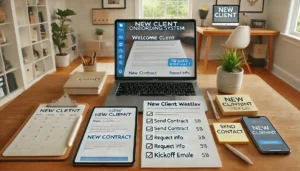Pitching is one of the most important skills a freelance writer can develop. It’s how you get new clients, build relationships, and grow your business. But many writers struggle with it because they worry about coming across as desperate, annoying, or overly salesy.
The good news is: you can pitch with confidence and professionalism—without being pushy. In fact, when done well, a pitch feels more like a helpful conversation than a sales tactic.
Here’s how to master the art of pitching your writing services in a way that builds trust, shows value, and gets results.
Understand That Pitching Is About Offering Help
First, change your mindset. Pitching isn’t begging for work. It’s offering your skills to help a business achieve its goals. Clients aren’t doing you a favor by hiring you—you’re providing a solution to their content challenges.
When you pitch, you’re essentially saying:
“Here’s how I can help you succeed. If you’re interested, let’s talk.”
That’s not pushy—it’s professional.
Choose the Right People to Pitch
The best way to avoid being pushy is to pitch people who are actually likely to need your services. That means doing some quick research before hitting send.
Look for businesses that:
- Have a blog that hasn’t been updated recently
- Publish great content but might need more help to scale
- Just launched a new product or service
- Don’t have clear website copy or engaging messaging
- Are in a niche you specialize in
Make a list of 10–20 businesses that fit your ideal client profile. This makes your pitch more relevant and better received.
Start With a Warm Approach (If Possible)
Whenever you can, try to warm up your leads before pitching. This increases your chances of getting a reply.
Ways to warm up a lead:
- Follow them on LinkedIn and engage with their posts
- Comment on their blog or social content
- Mention them in your own content (like a blog post)
- Share their work and tag them
Even just 1–2 interactions can make your name familiar, so your email feels less “cold.”
Write a Friendly, Personalized Email
Forget the generic templates. A great pitch feels personal, relevant, and human. Keep it short—under 200 words—and focus on the client’s needs.
Here’s a simple structure:
- Personalized opener – Show you’ve done your homework.
- Who you are – Briefly explain your niche and experience.
- What you can help with – Be specific about how you can add value.
- Proof – Link to 1–2 relevant samples.
- Call to action – Invite them to chat or ask a question.
Example:
Hi Mark,
I saw that your agency just launched a new SEO service—congrats! I’m a freelance writer specializing in content that supports marketing goals like yours, especially blog posts and landing pages.
Here are two samples of recent projects I’ve done in this space: [link] and [link].
If you’re open to it, I’d love to learn more about your content plans and see if I can support your team.
Best, [Your Name]
This message is polite, value-driven, and easy to respond to—without pressure.
Avoid These Common Pitching Mistakes
To stay professional and non-pushy, avoid the following:
- Writing long, overly detailed emails
- Talking only about yourself (focus on them)
- Using aggressive or salesy language
- Sounding desperate or begging for work
- Sending the same exact message to multiple people
Instead, lead with curiosity, clarity, and confidence.
Follow Up Respectfully
Following up is part of the process—and it’s not annoying if done correctly.
Wait 5–7 days after your first pitch. Then send a short, polite follow-up:
Hi Mark, just wanted to follow up on my message from last week. If you’re still exploring content support, I’d love to help. Let me know if now’s not the right time, and I’ll check back later.
You can send 1–2 follow-ups max. If there’s no response, move on gracefully.
Use a Soft CTA (Call to Action)
Pushy pitches often end with something like:
“Let’s schedule a call this week to discuss!”
This can feel too forward, especially if you’re emailing a stranger.
Instead, use softer calls to action:
- “Would you be open to a quick chat?”
- “Do you currently work with freelance writers?”
- “Can I send over a few ideas?”
These give the client space to respond without feeling forced.
Keep a Pitching Tracker
Track your outreach with a spreadsheet or CRM. Include:
- Company name
- Contact person
- Date of pitch
- Follow-up dates
- Status (replied, not interested, hired, etc.)
This helps you stay organized, avoid double-pitching, and see what’s working.
Keep Improving With Every Pitch
Pitching is a skill, just like writing. The more you do it, the better you get. Track which subject lines get opened, what emails get replies, and what types of clients respond best.
Use that data to improve your process over time.
Final Thoughts: Confident Pitching Opens Doors
You don’t have to be pushy, aggressive, or salesy to get freelance clients. In fact, the most successful pitches are respectful, personalized, and focused on serving the client.
Remember: pitching isn’t about convincing someone to hire you. It’s about showing them how you can help—and letting them decide when they’re ready.
Now go write that email. The right clients are out there—and they’re looking for exactly what you offer.



